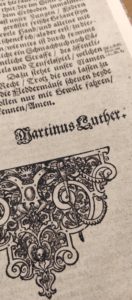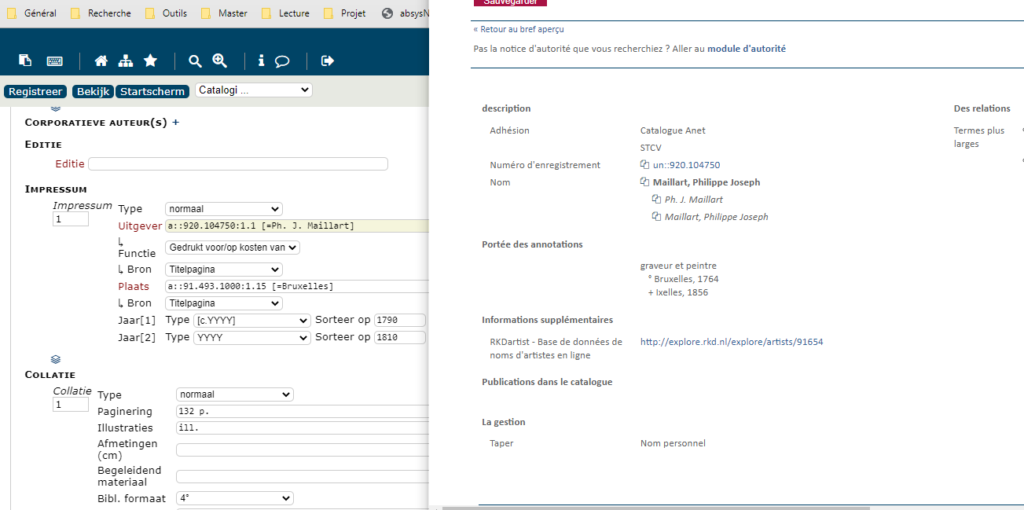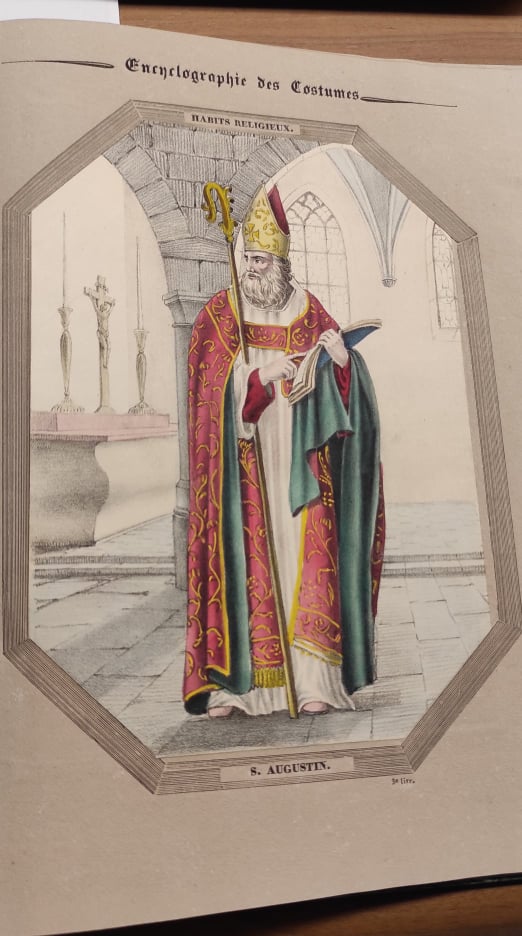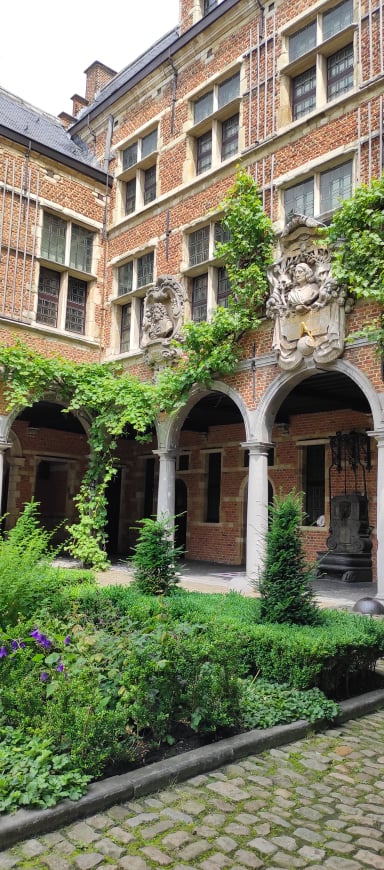On the 29th of June 2021, I arrived in the beautiful Centraal Station of Antwerp. I had reserved a room on an Airbnb which was at 10 minutes by bike from the Plantin Moretus Museum. On the 1st of July, I met my tutor Mr. Imhof who gave me a quick tour of all of the offices and different departments. A few months ago I had applied for this internship on the teacher’s advice, explaining my wish to take my very first steps into the professional world of libraries and archives. On the other hand, the internship represented a one-two punch also for my project as I have been working on the famous man behind the institution.
Christophe Plantin was a French printer who arrived in Antwerp between 1548 and 1549. Throughout his career he made himself known for the quality of his production as well as his head for business. Among the prestigious projects he participated in, one could count the Polyglot Bible for King Philipp II. At the end of his life, Plantin entrusted his son-in-law Jan Moretus I to take over the Officina. Afterwards, the following heirs tried to conserve the rigorous techniques and the edition policy of the master. During the 18th century, the building including the printing office and the house were sold to the city of Antwerp which converted it into a museum.
Before I started the internship I had a couple of expectations. Among them, extending my knowledge about rare books and my digital skills, discovering the intern organisation of an institution and conservation in general. As I was still not sure about the exact field I would like to work in, this experience would bring answers. The first mission I was entrusted in consisted in making the notices of a newly arrived collection. It comprised religious costumes books from the 16th to the 19th century. Therefore, the information had to be completed into the electronic catalogue[1]. One of the first difficulties concerned Deutsche as I had none yet vocabulary, but by dint of working on it I learned the specific words related to rare books and cataloguing. I was taught about the special cases and their particularities but I noticed that the most important details came firstly from the title-page. The state of the book or its exterior appearance did not matter, only the edition did. Then, I became very soon able to make myself authority notices of the different artists and authors of the collection.


My second mission consisted in the examination of illustrations in the books by the Antwerp-based printer Hendrik Aerstens. The latter was used to work with different engravers but the most recurrent one was Boëtius Adams Bolswert (1585-1633). I had to pick up all sorts of details concerning the engravings like their nature, any signature, their topic to name but a few. I learned a lot concerning the representation of Bible chapters as well the iconography in vogue during the period.

The experience to work as an intern with such an important amount of rare books increased my skills on the rare books description and analysis as well the research inside the specialised bibliographies[2]. The ability of working on a website in a foreign language improved my capacity to adapt myself. Moreover, filling an electronic catalogue and making authority notices represent an universal competence as plenty Western libraries employ the same system. I had the opportunity to work with passionate people who told me about their career which was very enriching for me. Finally, I assume the management of different tasks added to the advancement of other works in a context of work autonomy made me organise my time between them. I must thank M. Imhof for his welcome and support during my stay as well as for his precious help during my research for the project. I also thank all of the employees of the Museum for their kindness and involvement to assist me when I needed it.

[1] The Persoons collection should be online soon: https://anet.be/desktop/mpm
[2] Colas, René. Bibliographie générale du costume et de la mode, Édition Colas, Paris, 1933.

